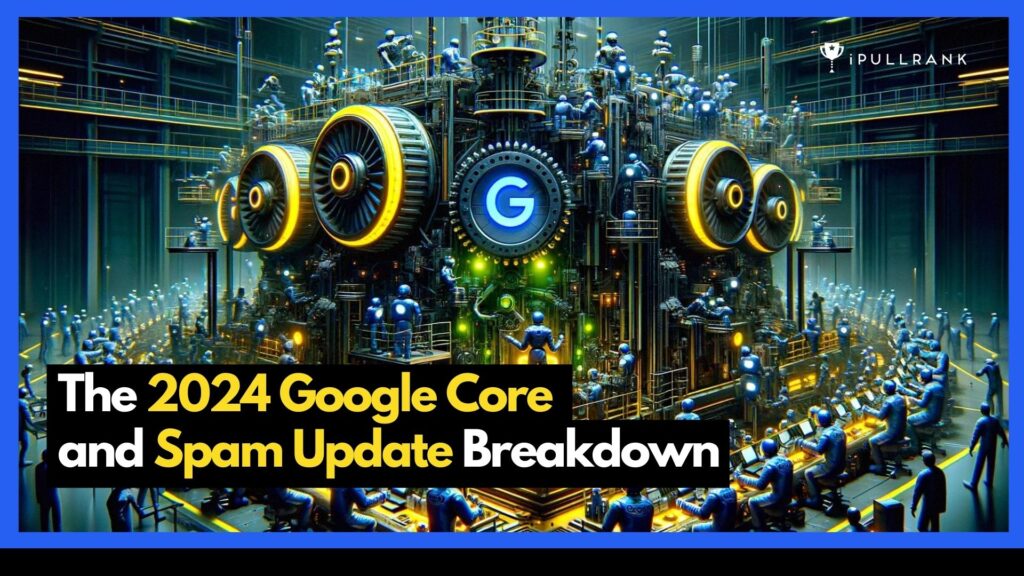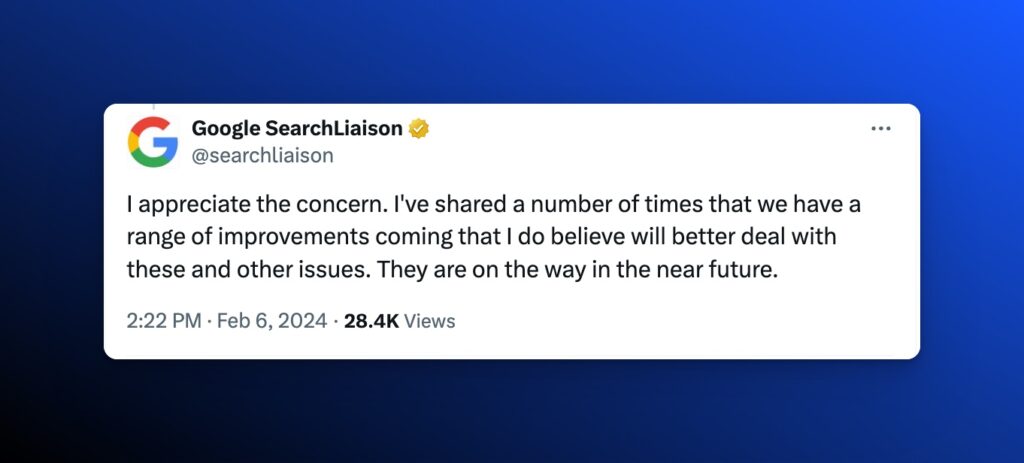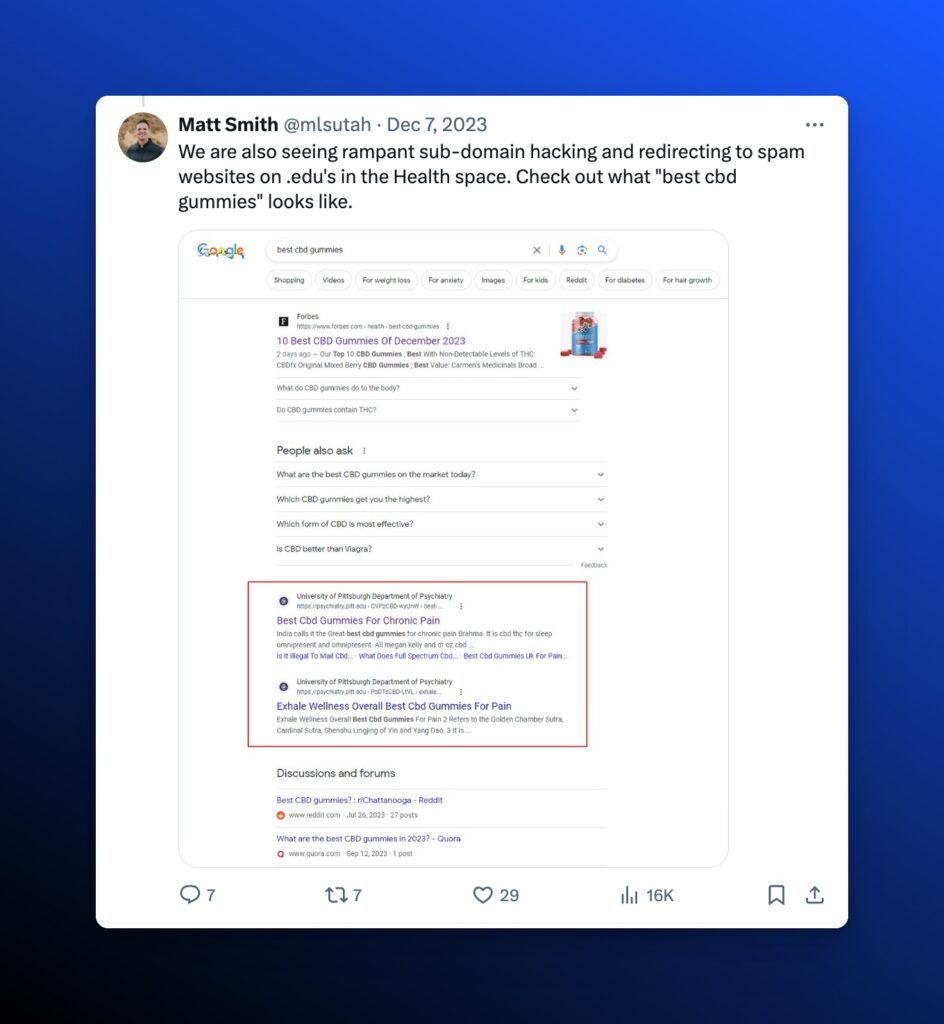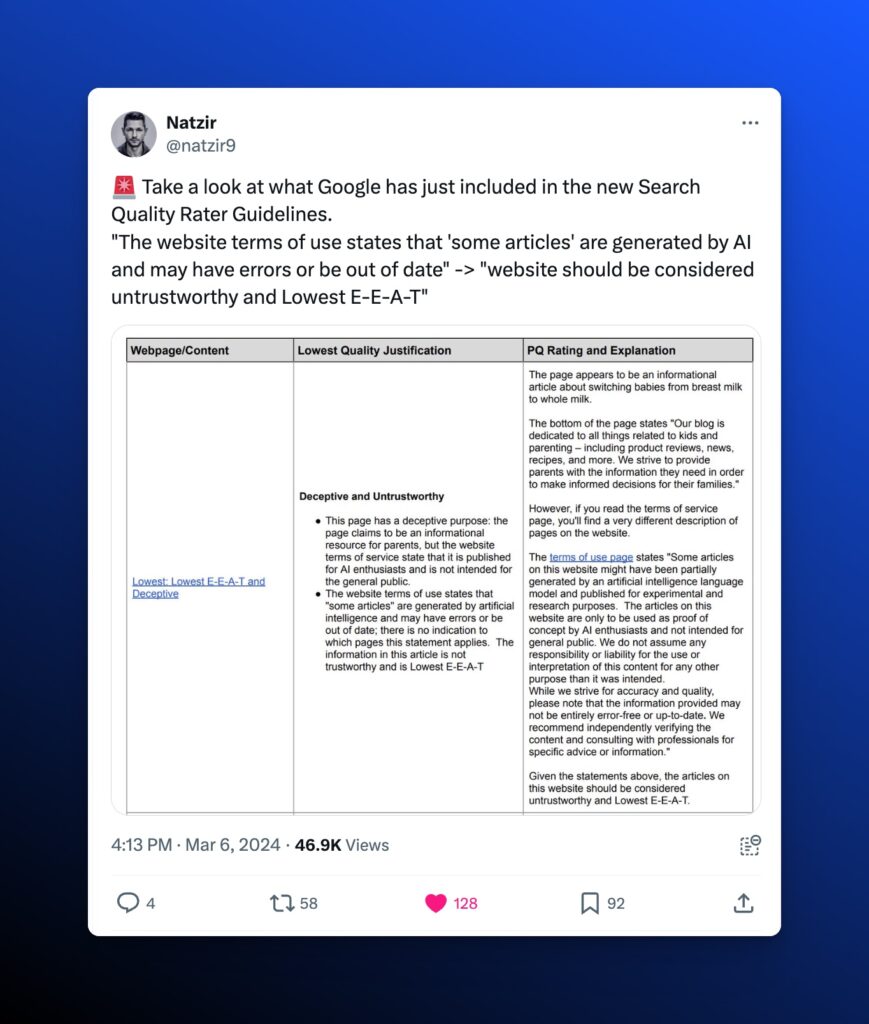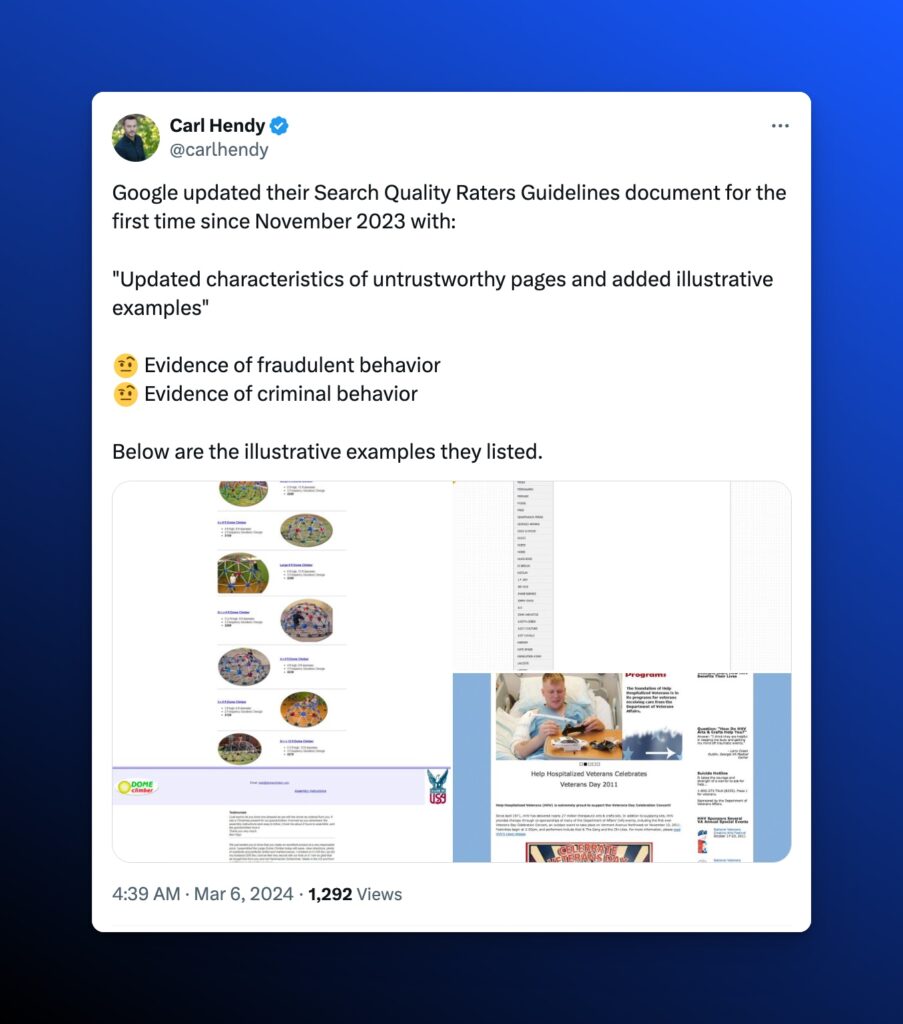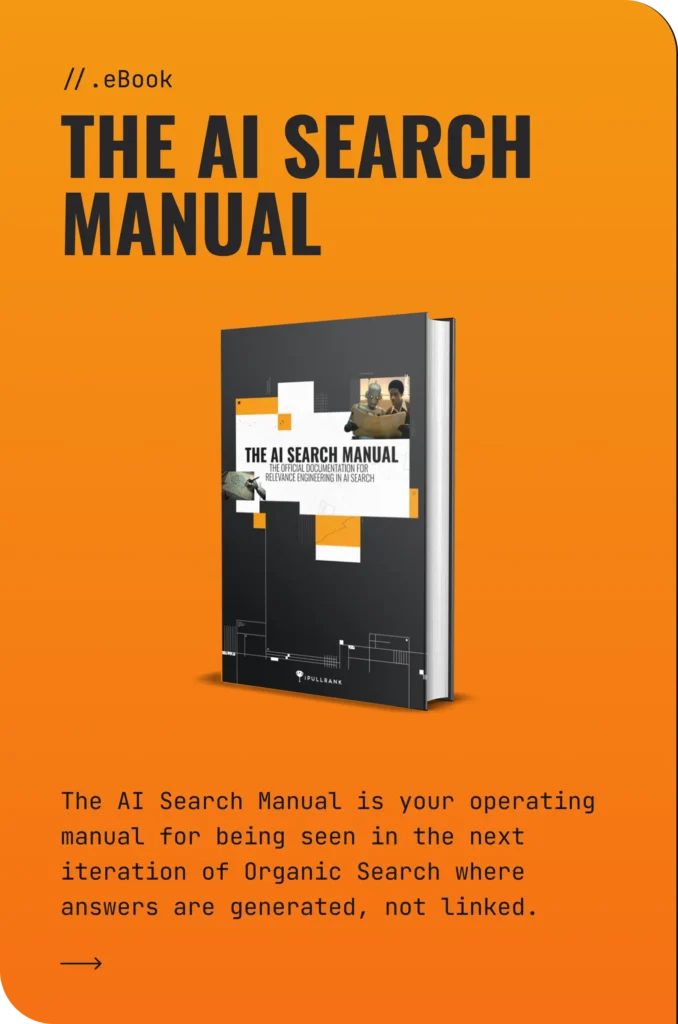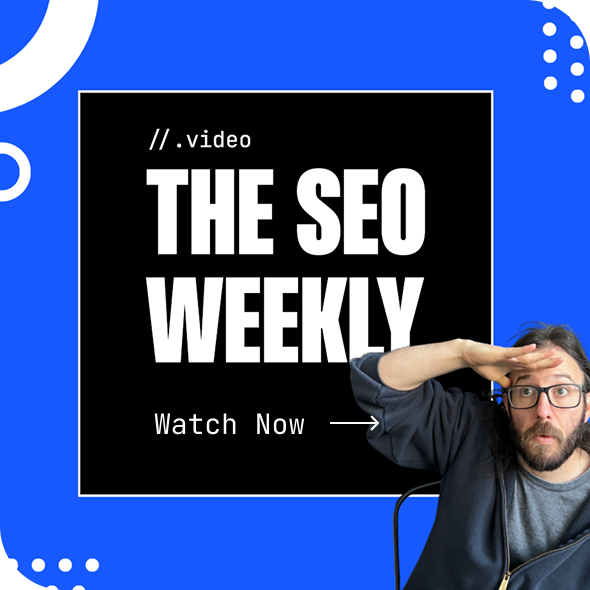Google doesn’t typically make big announcements regarding core updates. We might see a post on X, an update on the Google Search Status Dashboard, and maybe a short post on the Search Central blog.
But something big is brewing. Remember when Google Search Liaison Danny Sullivan said “Buckle Up” at BrightonSEO back in November 2023?
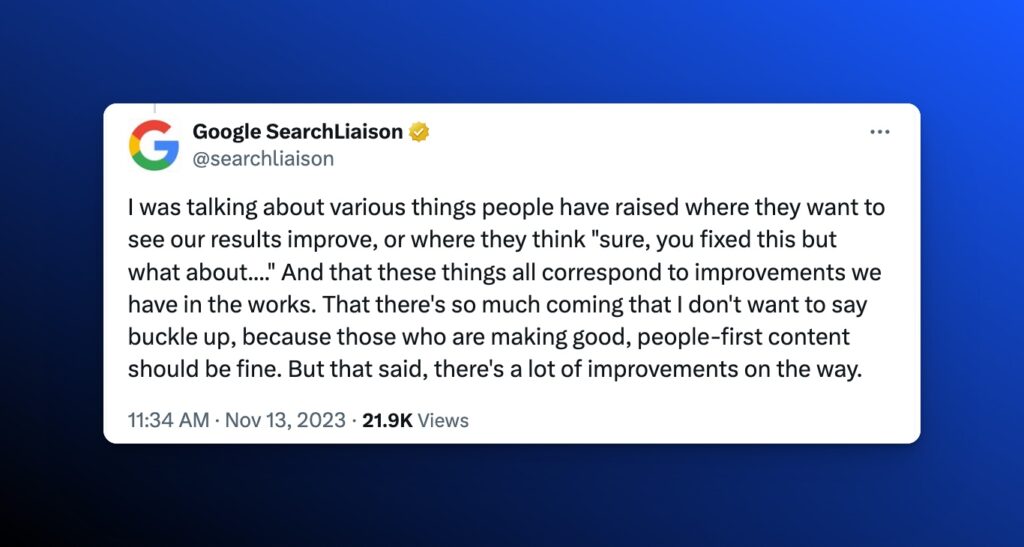
Google went on a mini-PR tour and SEOs are anticipating a major shakeup. They referred to the most recent core update as more ‘complex’ than normal core updates. Let’s look at what was announced, what it means, and what you should do next.
TL;DR
- Significant Core Algorithm updates that integrate new systems and signals
- The Helpful Content System has been integrated into the Core System
- Helpful content and Google Search results FAQ
- Approximately 1 month to rollout
- A Spam Update (with new spam policies) that explicitly targets:
- Expired Domain Abuse
- Obituary Spam
- Scaled Content Abuse (Low-quality Programmatic SEO)
- Site Reputation Abuse (Officially launching May 5th)
- Quality Rater Guidelines Update
The March 2024 Core Update
On Tuesday, March 5th, Google announced that they have begun rolling out the first Core Algorithm Update since November 2023.
We don’t typically get communications from Google like this unless it signifies something new or important that they want the media, digital marketers, and SEO to know.
The blog post is framed around the complementary Spam Update. The key messaging specific to the core algorithm states:
“This update involves refining some of our core ranking systems to help us better understand if webpages are unhelpful, have a poor user experience or feel like they were created for search engines instead of people. This could include sites created primarily to match very specific search queries.
We believe these updates will reduce the amount of low-quality content on Search and send more traffic to helpful and high-quality sites. Based on our evaluations, we expect that the combination of this update and our previous efforts will collectively reduce low-quality, unoriginal content in search results by 40%.”
More insights into the update were revealed in the Search Central developer blog post by Chris Nelson of the Search Quality Team [emphasis mine]:
“The March 2024 core update is a more complex update than our usual core updates, involving changes to multiple core systems. It also marks an evolution in how we identify the helpfulness of content.
Just as we use multiple systems to identify reliable information, we have enhanced our core ranking systems to show more helpful results using a variety of innovative signals and approaches. There’s no longer one signal or system used to do this, and we’ve also added a new FAQ page to help explain this change.
As this is a complex update, the rollout may take up to a month. It’s likely there will be more fluctuations in rankings than with a regular core update, as different systems get fully updated and reinforce each other. We’ll post to our Google Search Status Dashboard when the update is finished.
There’s nothing new or special that creators need to do for this update as long as they’ve been making satisfying content meant for people. For those that might not be ranking as well, we strongly encourage reading our creating helpful, reliable, people-first content help page.”
The discussions around “200 ranking factors” are irrelevant in 2024. The primary mechanism that determines results is a set of core systems that work together using factors and signals (synonyms in the eyes of Google) all working together and weighted differently. It’s more complex than ever.
In addition to spam concerns, Chris highlights Google’s focus on the “helpfulness” of content. Previously, we knew of the 2022 Helpful Content System that would classify an entire website as helpful or unhelpful. That classification would impact rankings for every URL of the entire site. The new FAQ page explains that the Helpful Content System has evolved over the past couple of years. “There is no one system used for identifying helpful content. Instead, our core ranking systems use a variety of signals and systems.” That’s why it’s been fully integrated into the core set of systems. Of note, Panda started as an independent system as well before being integrated into the Core System.
While they do state that the core system is primarily focused on individual pages, it does consider site-wide signals, and “having relatively high amounts of unhelpful content might cause other content on the site to perform less well in Search, to a varying degree. Removing unhelpful content might contribute to your other pages performing better.”
The referenced Creating helpful, reliable, people-first content page provides a series of valuable clues, guiding questions, and self-assessment advice for anyone concerned about the helpfulness of their content.
Elements of it are subjective and ambiguous like:
- Does the content provide a substantial, complete, or comprehensive description of the topic?
- Does the content provide insightful analysis or interesting information that is beyond the obvious?
- Is the content produced well, or does it appear sloppy or hastily produced?
- After reading your content, will someone leave feeling they’ve learned enough about a topic to help achieve their goal?
- Will someone reading your content leave feeling like they’ve had a satisfying experience?
Other recommendations are objective and actionable:
- Does the content provide original information, reporting, research, or analysis?
- Does the content have any spelling or stylistic issues?
- Is it self-evident to your visitors who authored your content?
- Do pages carry a byline, where one might be expected?
Remember, that despite these subjective recommendations, Google still uses metrics and mathematical algorithms to assess and rank content. It’s one of the reasons that we emphasize the value of content engineering at iPullRank.
Taking into consideration all of the focus around helpful content in this core update (aside from the reduction of spam), what does Google hope this update will accomplish?
According to Elizabeth Tucker, Director of Product Management for Google Search, this update “will collectively reduce low-quality, unoriginal content in search results by 40%.” It’s worth noting the PR-driven mention that they “believe these updates will reduce the amount of low-quality content on Search and send more traffic to helpful and high-quality sites.”
As such, this update with take about 1 month to completely roll out. While that sounds more significant than past updates that have taken 2 weeks, the most recent core update in November 2023, took nearly 26 days.
Our Take: What should you do in anticipation of this update?
According to iPullRank’s founder Mike King in our last episode of SEO Battlezone, nothing.
Well, nothing initially:
- Wait 2 weeks until after the rollout is complete. During an algorithm update, it’s wise to wait at least two weeks before making any adjustments to your site. Quick reactions can lead to unnecessary changes that might worsen your site’s performance. Algorithm updates often include temporary dips in rankings, so patience is key to understanding the actual impact.
- Use data and compare performance to SERP competitors. To assess if an algorithm update has negatively affected your site, compile and analyze various data sets such as crawl activity, visibility scores, traffic, and search volumes. Look for patterns such as spikes or drops in crawl activity that precede changes in visibility and traffic. Understanding the full context, including competitor actions, is crucial in determining the true cause of any ranking changes.
- How do you future-proof against updates? For future algorithm updates, maintain a focus on creating high-quality, unique content and avoid panic-driven SEO strategies. Updates should reinforce the importance of best practices in SEO, like content creation with information gain, rather than inducing significant shifts in strategy. Consistency and value in content are essential for sustaining performance through algorithm changes.
An SEO’s nightmare scenario? Playing by the rules, doing their best, and still losing significant search traffic. Sometimes, there are false positives and the hope is that your site recovers.
If you’re seeing massive losses, reach out to iPullRank for a consultation.
We helped a business recover from a 40% traffic loss after Panda and generate 500% growth in leads.
The 2024 Spam Update
Beyond the core update, Google’s focus has been primarily on tackling some massive spam issues that have been plaguing the search results over the past year.
As Search Liaison Danny Sullivan has been peppered with specific issues on X over the past few months, he’s been implying that there were big changes in the works.
Concurrently with the core update, Google also announced a new Spam Update featuring new spam policies.
We’ll go through each of the key tactics that Google’s now targeting:
- Scaled Content Abuse (Low-quality Programmatic SEO)
- Expired Domain Abuse
- Obituary Spam
Site Reputation Abuse (Officially launching May 5th)
Scaled Content Abuse
Perhaps the most interesting focus is on how Google might potentially address the avalanche of generative AI content published at scale.
Before we all declare the death of programmatic SEO, the new spam policies focus specifically on the ‘abuse’ of scaled content. Their position on Generative AI content hasn’t changed. Whether the content is generated at scale by humans or AI, they want to avoid content that adds no value.
“This abusive practice is typically focused on creating large amounts of unoriginal content that provides little to no value to users, no matter how it’s created.
This new policy builds on our previous spam policy about automatically-generated content, ensuring that we can take action on scaled content abuse as needed, no matter whether content is produced through automation, human efforts, or some combination of human and automated processes.”
In the spam policy update, they provide a few different examples:
- Scraping feeds, search results, or other content to generate many pages (including through automated transformations like synonymizing, translating, or other obfuscation techniques), where little value is provided to users
- Stitching or combining content from different web pages without adding value
- Creating multiple sites with the intent of hiding the scaled nature of the content
- Creating many pages where the content makes little or no sense to a reader but contains search keywords
Google recommends that you hide it from search by either noindexing pages or removing them.
But we could see sites that incorporate original data into their programmatic pages with generative AI content that incorporates that data in creative ways to be helpful to users.
For example, the way Semrush or Ahrefs produce Gen AI traffic data pages that include search volume data and appear in search.
But if you’re producing autogenerated summarized content or non-sensical unhelpful content at scale, it’s likely that this update will result in significant ranking losses or a manual penalty.
Less than 24 hours after this announcement, a rapid-fire report came out by Originality listing the various websites abusing scaled content that had been deindexed completely as a manual action. Keep in mind that these were manual actions and independent of the Spam Update. But they were timed with the rollout of the update.

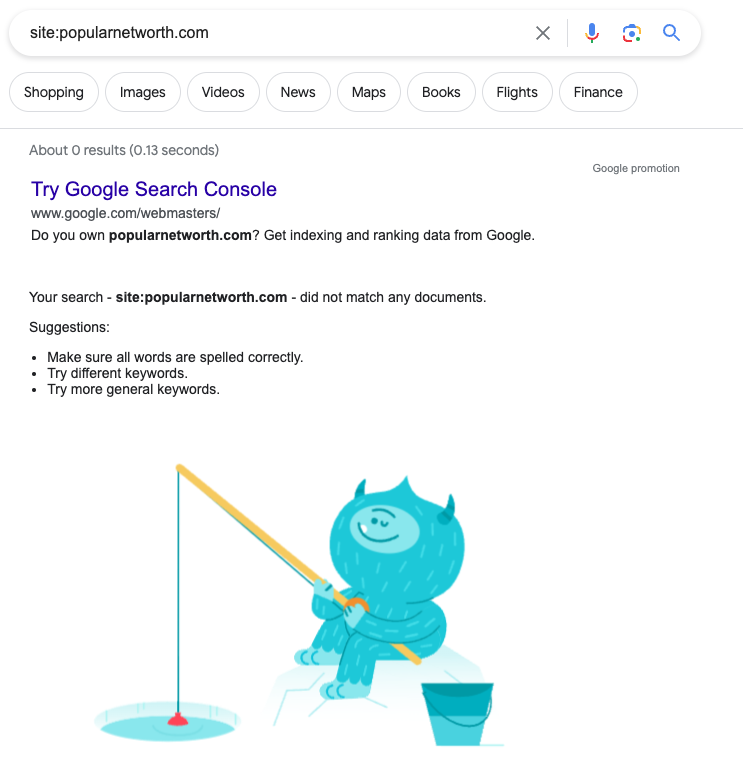
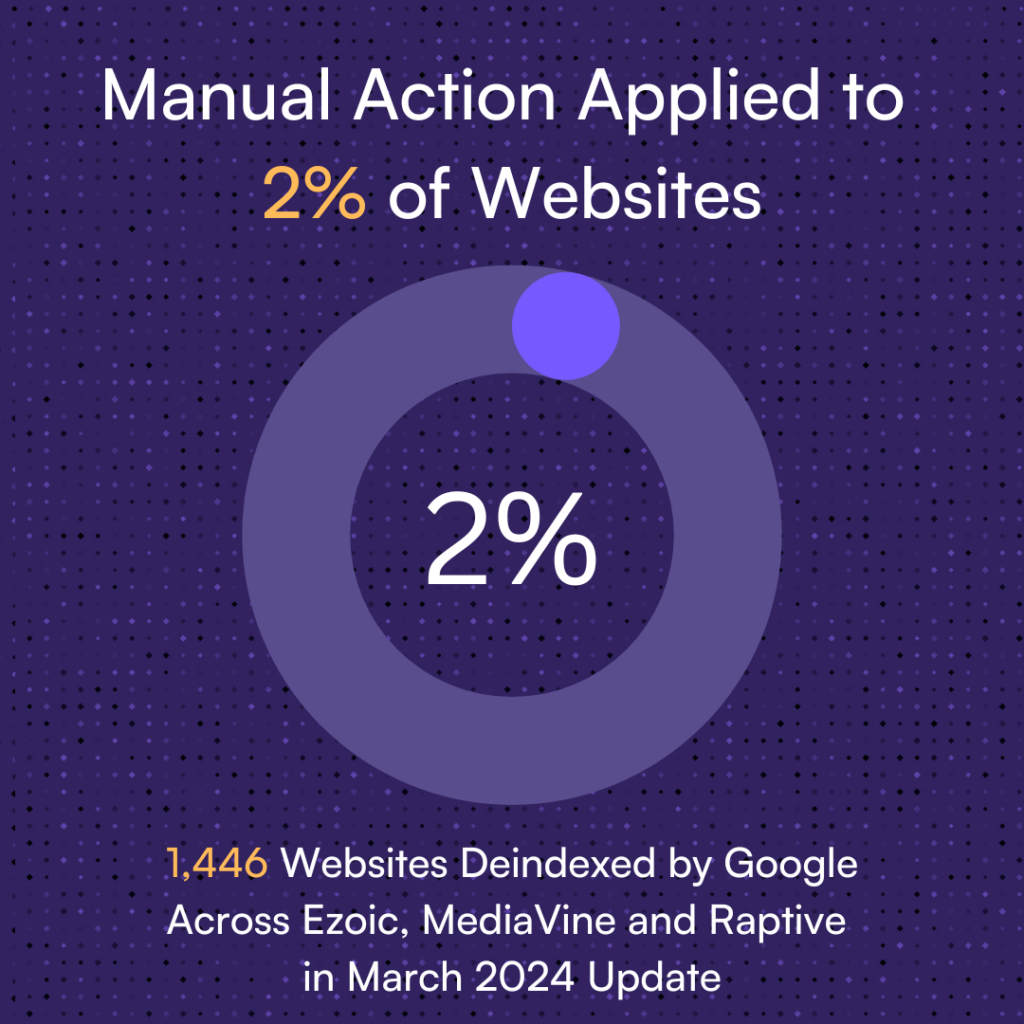
Source: Originality.ai
So to clarify, Google is not claiming that Generative AI content will be penalized unless it’s unhelpful, bad content.“
Expired Domain Abuse
For a long time, SEOs have been able to purchase an expired domain that has a portfolio of valuable backlinks and revive it for nefarious purposes. It could be as part of a redirect scheme or a PBN. Many affiliate marketers made a living off of creating new brands and affiliates from expired domains.
A couple of specific examples from the spam policies page:
- Affiliate content on a site previously used by a government agency
- Commercial medical products being sold on a site previously used by a non-profit medical charity
- Casino-related content on a former elementary school site
Now, Google has put that tactic to rest. Mike King highlighted in his recent PubCon presentation that in the past, Google reps have said that leveraging the beneficial signals of expired domains doesn’t work to boost SEO. And yet, here we are, with an explicit banning of the tactic.
If it were up to Mike, Google would just remove any benefit (or penalty) of an expired domain.
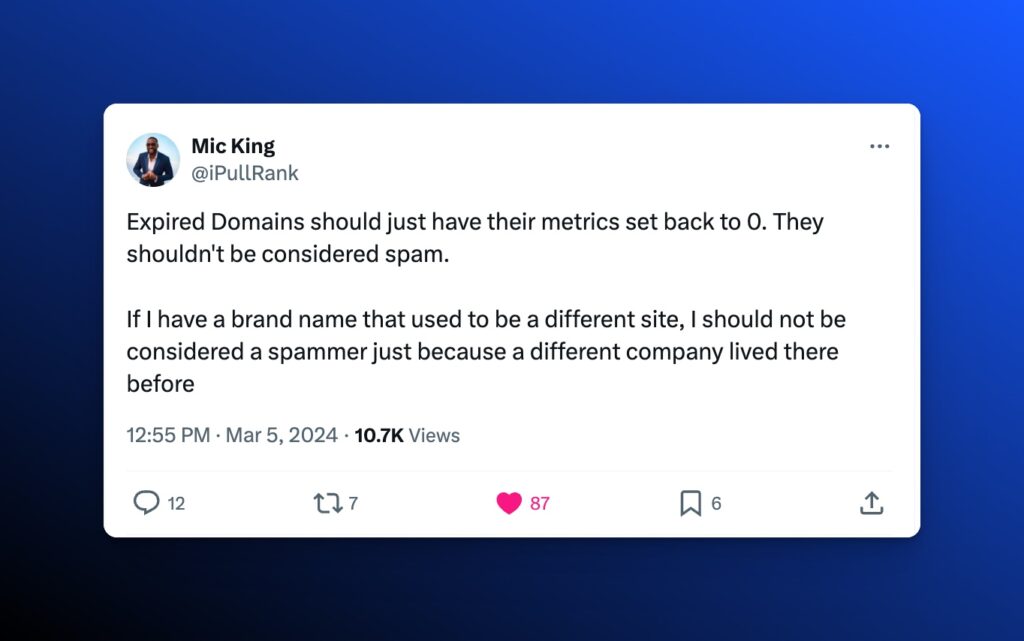
Site Reputation Abuse
Recently, a subdomain on Harvard.edu was hijacked for selling CBD Gummies via affiliate links. The example got visibility from Lily Ray in the SEO community and has become one of the key spam targets for this update. The University of Pittsburgh was exploited as well:
Site reputation abuse refers to 3rd-party content published without consent or oversight by the 1st party.
Google needed to thoughtfully list out examples of what constitutes abuse and what’s allowed since many legitimate businesses engage in sponsored and sanctioned content. In other words, offenders are likely to be outed via reports or clearly manipulative practices.
Here’s the full list of approved contexts:
- Wire service or press release service sites
- News publications that have syndicated news content from other news publications
- Sites designed to allow user-generated content, such as a forum website or comment sections
- Columns, opinion pieces, articles, and other work of an editorial nature where there is close involvement or review by the host site
- Third-party content (for example, “advertorial” or “native advertising” type pages) that’s produced with close involvement of the host site, where the purpose is to share content directly to readers (such as through promotion within the publication itself), rather than hosting the content to manipulate search rankings
- Embedding third-party ad units throughout a page or using affiliate links throughout a page, with links treated appropriately
- Coupons that are listed with close involvement of the hosting site
The use of coupons on subdomains was of particular interest interest from the SEO community.
Site reputation abuse was the only policy that provided sites with a grace period. “We’re publishing this policy two months in advance of enforcement on May 5, to give site owners time to make any needed changes.”
Quality Rater Guideline Updates
Finally, there were a couple of subtle changes to the Quality Rater Guidelines regarding when raters should qualify pages as ‘untrustworthy.’
We did see a callout specifically for content generated by AI that includes factually incorrect content.
However, let’s not take what’s written in the post as fact. The context of this implies the focuses on the website disclaimer that some of the GenAI content may have errors. If a human is reviewing the content for errors, then you can expect that type of content to be considered trustworthy. If there’s no human oversight, then the quality rater could find the content untrustworthy.
There were also clear additions that focused on deceptive and fraudulent practices with visual examples.
An important distinction for the Quality Raters. They are never grading specific pages. Their role is to assess at a macro level whether Google’s algorithms are surfacing the best and most helpful content based on their quality goals.
Google Algorithm Update Reminders and Thoughts
A massive algorithm update can be terrifying for site owners. Even when you feel confident that you’re doing things well in the eyes of Google, there’s a valid concern that an update might produce a false positive and produce a drop in rankings, visibility, and search traffic.
Over the past couple of decades, we’ve seen significant iterations and game-changing algorithm updates (Panda, Penguin, etc.). Before doing anything drastic, get another set of eyes on your reporting, your website, and your content. There’s rarely a one-size-fits-all prescription in these situations.
You need someone with experience who’s able to Sherlock Holmes the clues and piece together a bespoke strategy for removing penalties or regaining traffic.
Next Steps
Here are 3 ways iPullRank can help you combine SEO and content to earn visibility for your business and drive revenue:
- Schedule a 30-Minute Strategy Session: Share your biggest SEO and content challenges so we can put together a custom discovery deck after looking through your digital presence. No one-size-fits-all solutions, only tailored advice to grow your business. Schedule your session now.
- Mitigate SGE’s Potential Impact: How prepared is your SEO strategy for Google’s Search Generative Experience? Get ahead of potential threats and ensure your site remains competitive with our comprehensive SGE Threat Report. Get your report.
- Enhance Your Content Relevancy with Orbitwise: Not sure if your content is mathematically relevant? Use Orbitwise to test and improve your content’s relevancy, ensuring it ranks for your targeted keywords. Test your content today.
Want more? Visit our Resources Page for access to past webinars, exclusive guides, and insightful blogs crafted by our team of experts. Everything you need to keep your business ahead of the curve is right at your fingertips.
Take the next step with iPullRank.
